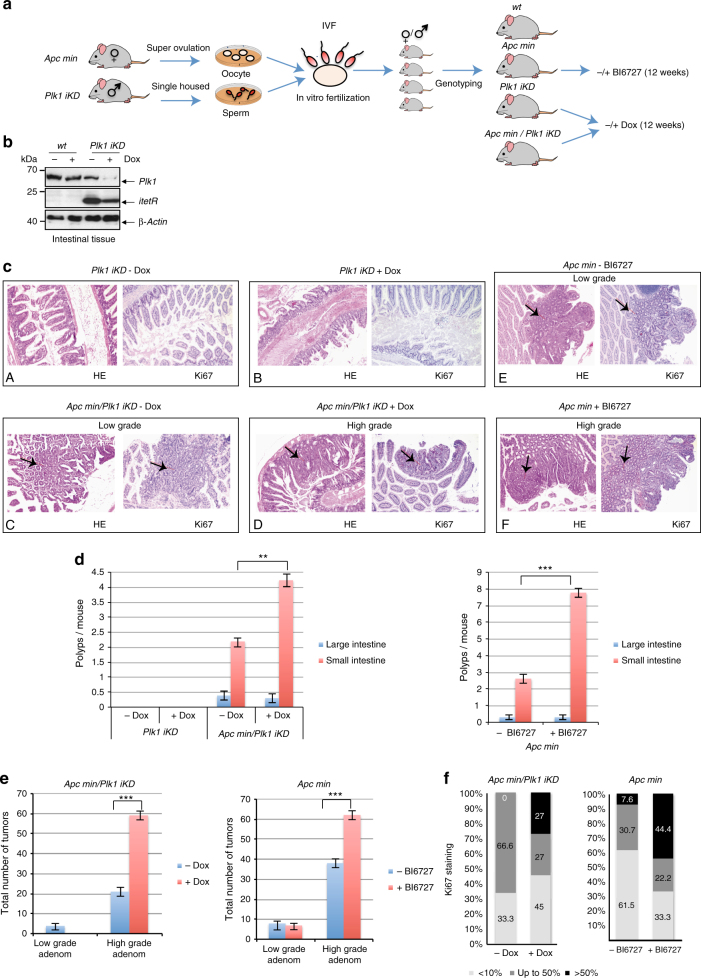Fig. 8.
Inhibition of Plk1 by RNAi or BI6727 increases the incidence of intestinal polyps in mice. a Scheme of the experimental procedure for the generation of transgenic mice. b Total cellular protein was prepared from the intestinal tissues of adult Plk1-iKD (±Dox) and separated by SDS–PAGE for anti-Plk1, -itetR, and -β-Actin immunoblotting analyses. c Hematoxylin/eosin-stained sections of normal and tumor tissues from Plk1iKD, ApcMin/+Plk1iKD and ApcMin/+ mice (±Dox) (×100). Sections were subjected to immunohistochemical evaluation after staining with IgGs to Ki-67 (×100). Black arrows highlight low grade (C,E) and high-grade (D,F) adenomas. (d) Mice of different genotypes and treatment schedules were sacrificed. Intestines from each mouse were examined using the Swiss role technique under a dissection microscope for tumor polyps. Average number of adenomas in colon and the small intestine from Plk1iKD, ApcMin/+Plk1iKD with or without Dox-treatment, ApcMin/+ with or without BI6727-treatment are shown. No visible tumor masses were detected in WT and Plk1iKD mice. e Sections of intestines from each mouse were examined under the microscope for the determination of the histological grade. Quantification of low and high grade adenomas in the small and large intestine from ApcMin/+Plk1iKD with or without Dox-treatment, ApcMin/+ with or without BI6727-treatment are shown. f Since the expression of the Ki-67 protein is strictly associated with cell proliferation, we used the staining of Ki-67 in intestinal tissues to dermine the proliferative activity in corresponding sections. The staining was quantified based on different cutoff levels (<10%, ≤50% and >50%). (means ± s.d., n = 3, for each treatment). **P < 0.01, ***P < 0.001, Student’s t-test, unpaired and two-tailed

